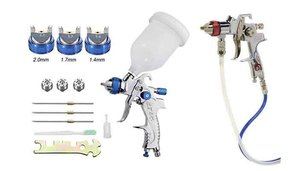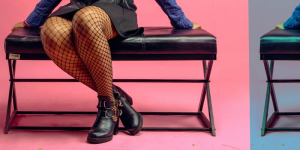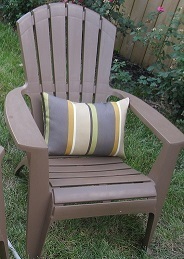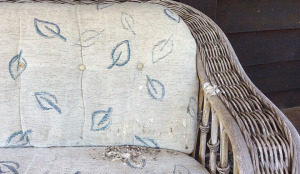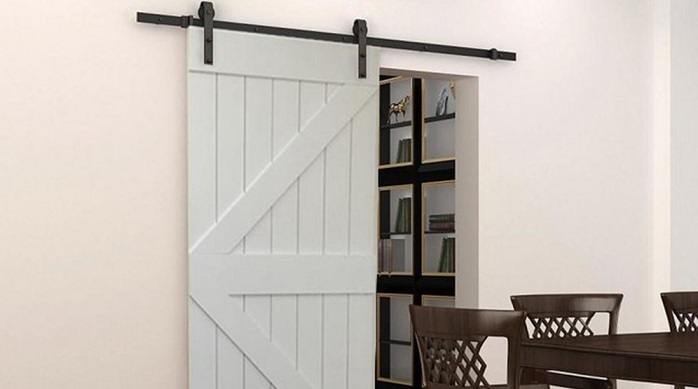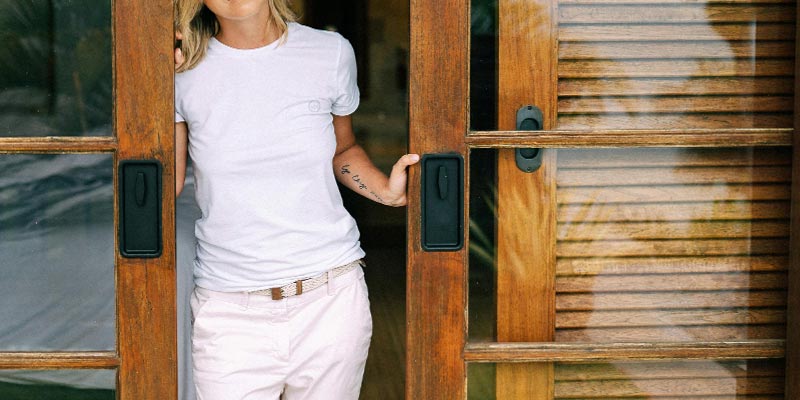
Learn how to DIY clean upholstery sofa and chair seats at home, cheaply and efficiently. Easy instructions, suitable for fabric and leather seats, around your house, car, camper or boat.
Keeping your prized furniture pieces clean and tidy can be an expensive and time-consuming endeavor, if taken to a professional. While there are many services that offer professional in-home upholstery cleaning, in many cases you might not have the budget or the need for such deep cleaning.
Fortunately, it is quite easy to DIY clean upholstery with pretty good results. It won’t offer the same deep clean that a quality steam cleaning machine can offer, however, for most cases it’s good enough.
In this guide, we explain how to DIY clean upholstery whether fabric or leather, around your home, camper, car and even your boat.
Cleaning Fabric Upholstery DIY
Many, if not most, chairs and sofas around the home have some form of fabric upholstery. When something drops on a seat, it can discolor the upholstery. That little smudge can be spread all over the area within a matter of a few minutes.
And while it may be tempting to run out to the local shop to buy some expensive cleaner, it’s simply faster to make your own from regular household materials. When it comes to spot-cleaning fabric upholstery, all you need is a little bit of baking soda and some elbow grease.
How to DIY Clean Upholstery Fabric: Small Spots
What You’ll Need
- Baking Soda (aka Bicarbonate of Soda)
- Warm Water
- Bowl
- Toothbrush
- Dry Cloth
Steps for Spot-Cleaning Fabric Upholstery
#1: Vacuum the Seats
Always remember that before you begin doing any type of spot treatment, you thoroughly vacuum the seats to remove any possible remnants of dirt or debris. If there are any specs of dirt left on the fabric, then it can be easily smudged around making things a lot worse.
#2: Combine the Baking Soda and Water
Once the seats have been thoroughly vacuumed, it’s time to make your cleaning solution. The cleaning solution is made with:
- 1/4 cup of baking soda
- 1 cup of warm water
These 2 simple ingredients are then mixed together thoroughly, until the solution becomes completely clear.
#3: Apply the Spot Remover
Next, you will need to take out your toothbrush, and dip it into the cleaning solution that you just mixed. Gently dab the solution onto the affected areas, and let it sit for a moment. This allows it to soak into the fabric, dirt, grime, or grease.
#4: Gently Scrub the Seats
After about 30 seconds to 1 minute of soaking, use the toothbrush to gently scrub the fabric. You do not want to scrub too hard, because you don’t want to damage any of the fibers. Instead, using light circular motions, scrub the area affected by the stain, as well as the immediate area surrounding it until it begins to look clean.
#5: Let the Solution Sit
Leave the solution on the fabric for about 30 minutes to let it penetrate. Don’t worry if it dries out, add more solution to the stain. The important thing is to let the baking soda solution soak into the affected area, and penetrate the grease, grime, and dirt.
#6: Blot Away
Once you have let it sit for about 30 minutes, it’s time to use your dry cloth to blot away any of the stains as well as any leftover spot remover. Because this is a mild cleaning solution, you may need to repeat these steps several times before you get the results you are looking for.

How to DIY Clean Upholstery Fabric: Large Areas
When working with larger areas of fabric upholstery, you will need a cleaning solution that’s a little bit stronger than baking soda. Vinegar and dishwashing soap are the perfect ingredients for a stronger upholstery cleaner.
What You’ll Need
- Household Vinegar
- Dishwashing Detergent
- Warm Water
- Spray Bottle
- Toothbrush
- Dry Towels
Steps to DIY Clean Upholstery Fabric in Large Areas
#1: Vacuum the Seats
As always, remember to begin by vacuuming out the seats, in order to remove any dirt or debris from the area. If anything is left behind, it can smudge and make the stains worse. It would be counterproductive to say the least.
#2: Combine the Baking Soda and Water
In a small spray bottle, start by mixing:
- 1/4 cup of regular household vinegar
- A few squirts of liquid dish detergent.
Then add in some warm water to the top, and shake it thoroughly. You want to make sure that the vinegar, dish detergent, and water are thoroughly mixed.
Once you have finished mixing it up, make sure to let it sit for at least 5 minutes.
#3: Spray the Solution on the Fabric Upholstery
Using the spray bottle, simply spray the solution on the upholstery fabric seats. Start from the top and work your way all the way down to the front of the seats, making sure to liberally coat every inch of fabric.
You will want to work on only one seat at a time, and only in small enough sections that you can thoroughly scrub with a toothbrush in 5 to 10 minutes. After you have finished the front side of the seats, move on to the backside of the seats.
#4: Gently Scrub the Seats
With the stiff-bristled toothbrush, gently scrub the seat from top to bottom. You will want to use a circular motion, as this will cause the least amount of damage to the fibers, while still managing to scrape up a lot of the dirt, grime, and dust.
#5: Let the Solution Sit
After you have finished scrubbing, continue to let the solution sit for about 15 minutes. Because the vinegar solution is a little bit stronger than the baking soda solution, you don’t want to leave it on for too long. Instead, after about 15 minutes of soaking, it’s time to start wiping it up with some towels.
#6: Wipe Away
Using your dry towels, began wiping up any excess moisture from the seat. Don’t worry about getting up all of the moisture, because that will be very difficult. Instead, leave the doors and windows open, and turn a fan on if available, while you continue to work on the rest of the seats.
#7: Let the Furniture Air Out
Letting the furniture air out serves two important purposes. First off, as you work from seat to seat, it helps to evaporate any remaining moisture on the seat. Secondly, the odor of the vinegar can be quite overwhelming, and it will take several days to get rid of the smell altogether.
Video demonstration
Below is a video demonstrating for cleaning fabric upholstery, if you need some more visual guidance. Although it is for the car, the same principles apply to any fabric upholstery.
Easiest Way to Clean Cloth Car Seats – View Video on YouTube
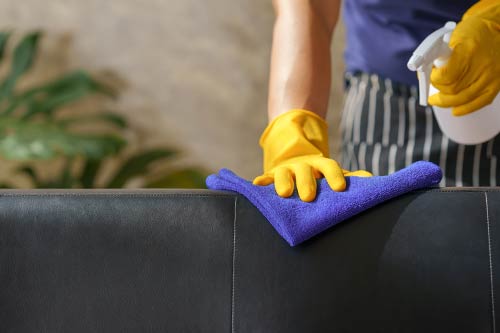
How to Clean Leather Upholstery DIY
Leather upholstery can be a lot touchier to clean than fabric upholstery. But that doesn’t make it impossible. With a little bit of know-how and some elbow grease, you can clean your leather upholstery and make it look brand-new in no time.
How to Clean Leather Upholstery: Small Spots
What You’ll Need
- Non-Gel Toothpaste
- Toothbrush
- Microfiber Towel
Steps to DIY Clean Upholstery Leather: Spot Cleaning
#1: Vacuum the Seats
Just like fabric upholstery, it’s important to vacuum the seats of leather upholstery in order to prevent any damage to the material. Unlike fabric upholstery, dirt and grime are less likely to smear or smudge across the leather, rather any dirt that is left on the surface will be rubbed into the leather, scratching it.
#2: Locate the Stains on Your Upholstery
You will want to work on each stain individually. Remember, leather upholstery can be quite expensive to repair, so it’s always important to work in small sections at a time. This way, if there are any adverse effects to the cleaning process, you can stop it before it damages everything.
#3: Apply Non-Gel Toothpaste
Remember to use only non-gel toothpaste, as this type of toothpaste is best for leather. Start by dabbing a small amount of the toothpaste onto a toothbrush, and then gently rub it into the stain. Remember to always use a circular motion, so that the bristles can get into and around the texture of the leather. This will allow it to dig into the stains and remove them faster.
#4: Blot Away
After you have thoroughly scrubbed the stain, use your microfiber towel to blot the stain as well as the toothpaste away from the leather. As with fabric upholstery, it may be necessary to re-treat the areas several times before you get the final result you are looking for. Just remember to take your time and don’t scrub too hard.
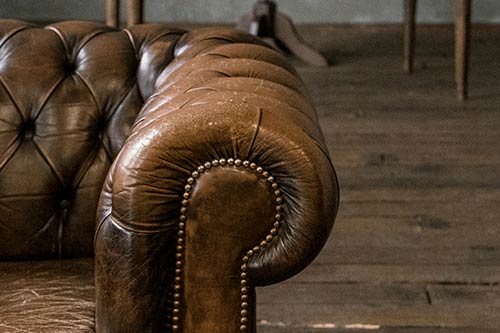
How to Clean Leather Upholstery: Large Areas
When it comes to cleaning leather upholstery, the best detergent is regular household vinegar. But, because of the structure of leather, you also need to include several different types of oil that are not only capable of breaking up stains but condition the leather as well.
What You’ll Need
- Household Vinegar
- Extra Virgin Olive Oil
- Lemon Essential Oils
- Bowl or Jar
- Hand Towel
- Paper Towels
How to DIY Clean Upholstery Leather: Large Areas
#1: Vacuum the Seats
In order to ensure that you don’t accidentally scratch the leather, always remember to start by vacuuming the seats thoroughly. If there’s any dirt left on the seat, it will scratch the leather the moment you start to scrub.
#2: Combine the Vinegar, Olive Oil, and Essential Oils
In a bowl or jar, start by combining:
- 1/4 cup of household vinegar
- 1/4 cup of extra virgin olive oil
- 10 drops of lemon essential oil
Put the lid on your jar and give it a good shake, or if using a bowl, whisk it thoroughly. Make sure to mix everything thoroughly before you begin using it.
#3: Spot Test
As always you want to make sure that you do a spot test before you start doing anything major. The reason for this is that the cleaning solution may actually affect the leather dye. In order to do a spot test, find a location that cannot be seen normally, and apply just a little bit of the solution. If the color does not change once it dries, then you are good to go.
#4: Clean Leather with the Solution
Using your dry towel, dip it into the cleaning solution, and in gentle circular motions, wipe down the seat. Use the towel to gently scrub the seat, making sure that the fibers of the towel get in between all of the folds and creases of the leather. Pay special attention to areas that are sewn together, as these tend to be stained worse than the rest of the seat.
#5: Wipe Away
Once you have finished wiping down the seats with the cleaning solution, you’ll then want to use a paper towel to wipe up any excess moisture. Open some windows or put on a fan, and let the furniture air out for a little bit, in order to get rid of the vinegar smell. The extra-virgin olive oil and the lemon essential oils will help to condition the leather as it airs out.
Video Demonstration
If you need a bit more visual guidance on how to clean leather upholstery and conditioning it, have a look at the video below. It is for car seats, but the same steps apply for home furniture.
Can you use olive oil to detail your car? – View video on YouTube
Ready to DIY Clean Upholstery? Let’s Start!
This wraps up our guide on how to DIY clean upholstery around your home or car, whether fabric or leather. We hope this has given you the info you need to get out there and give your seats a freshen up.
While the most common upholstery you will be cleaning are probably chairs and couches, these methods apply equally well to the various upholstered sections of your car, bed headboards, ottomans and any other upholstered items around your home, car, boat or camper.
Author
-

Hey, I’m Sara, co-owner of NestKoo! I’m a graphic designer and professionally trained fine artist, with a Bachelor of Arts (Fine Art) majoring in Painting. I love being close to nature, sustainable living and bringing new life to old things. My specialty in NestKoo is DIY house painting, upholstery and furniture upcycling, where I bring my skills in fine art painting and contemporary design together into a practical home DIY context.
View all posts



